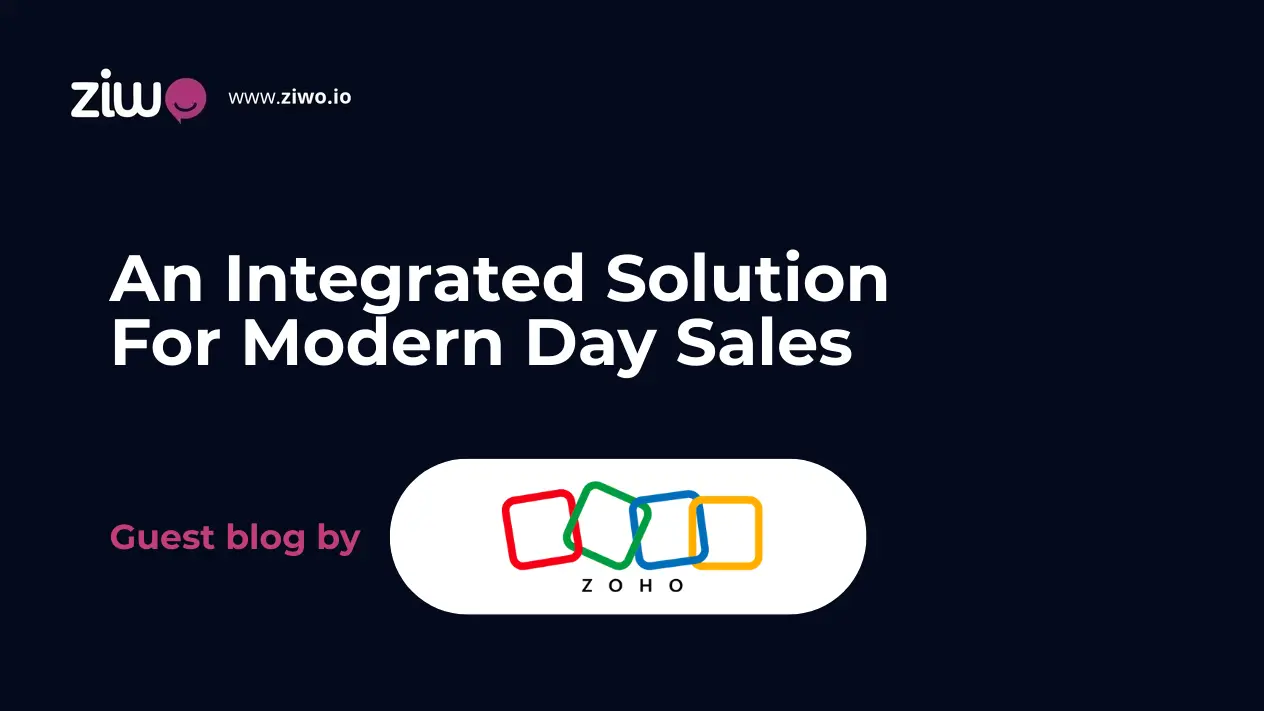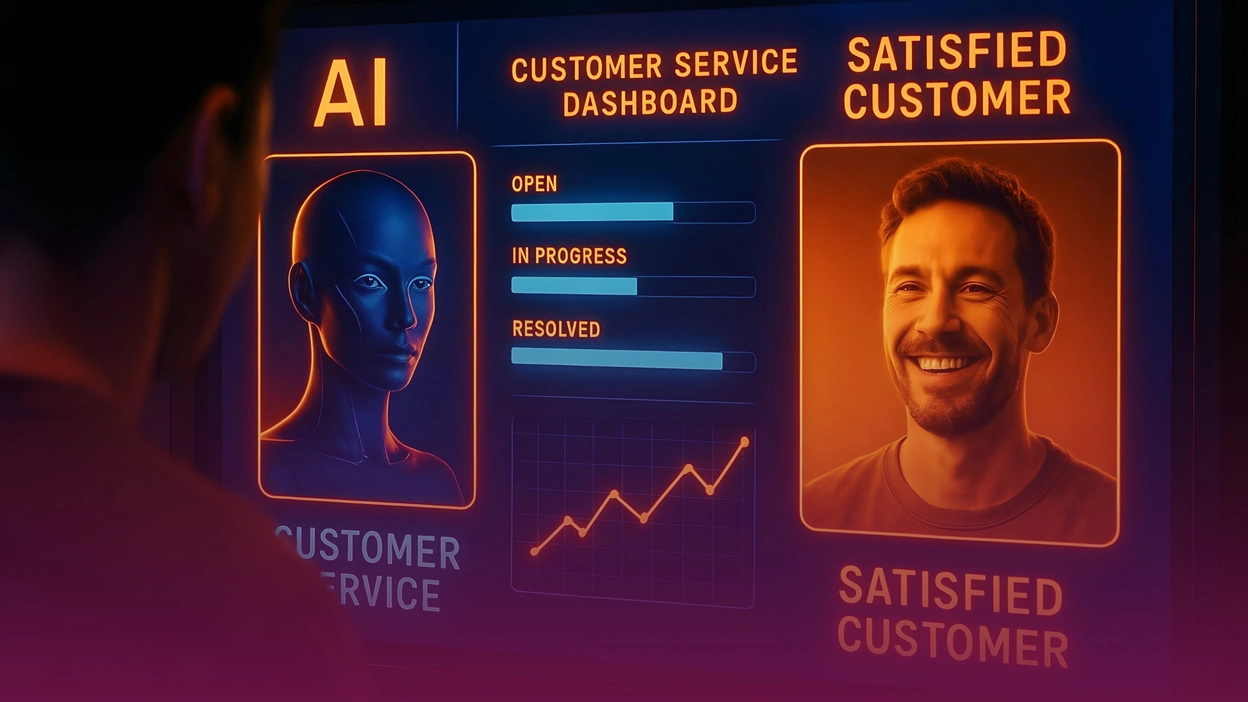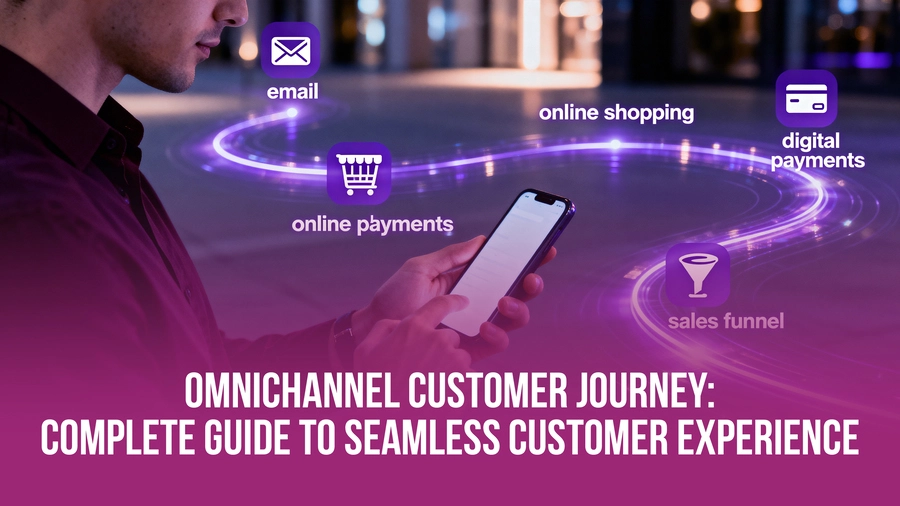
This comprehensive guide covers omnichannel customer journey optimization, providing actionable strategies for delivering seamless customer experiences across all touchpoints. Key topics include:
Core components: Integrated technology systems, cross-channel consistency, personalization strategies
Primary benefits: 20-30% increase in customer satisfaction, 25-35% improvement in customer retention rates
Implementation timeline: 6-18 months depending on organizational complexity
ROI realization: Typically achieved within 12-24 months post-implementation
Success metrics: Net Promoter Score (NPS), Customer Effort Score (CES), conversion rates, customer lifetime value
Definition: Understanding the Omnichannel Customer Experience
The omnichannel customer journey represents a unified, integrated approach to customer experience management that spans multiple channels, both online and offline. Unlike multichannel strategies that operate channels independently, omnichannel creates a seamless, consistent experience where customer interactions flow naturally between touchpoints.
Key distinction: Multichannel uses multiple channels independently; omnichannel integrates all channels for a cohesive customer experience.
What Technology Infrastructure Powers Effective Omnichannel Strategies?
Technology is the backbone of omnichannel success. It provides three key capabilities: real-time data integration across platforms, analytics to track and predict customer behavior, and communication tools to deliver consistent messaging and service.
The technology stack needed for omnichannel success includes:
- Customer Relationship Management (CRM): A central hub for storing customer data
- Customer Data Platform (CDP): Enables real-time data integration and analysis
- Marketing Automation Tools: Manage campaigns consistently across channels
- Analytics Tools: Track customer behavior and measure performance
- Integration Middleware: Connects systems and synchronizes data seamlessly
From Definition to Action: Why Mapping the Omnichannel Journey Matters
Understanding the definition of the omnichannel customer experience is only the first step. Knowing that customers expect seamless, integrated interactions across channels is important, but businesses also need a clear plan to deliver it.
That’s where customer journey mapping comes in. Mapping allows companies to:
- Visualize how customers move between online and offline touchpoints
- Identify friction points that disrupt a seamless experience
- Spot opportunities for personalization and consistency
- Create a roadmap that guides technology and strategy decisions
In short, journey mapping translates the concept of omnichannel CX into an actionable framework. Once businesses define what omnichannel means for their brand, mapping provides the structure to actually implement it.
Customer Journey Mapping Process: Strategic Implementation Steps
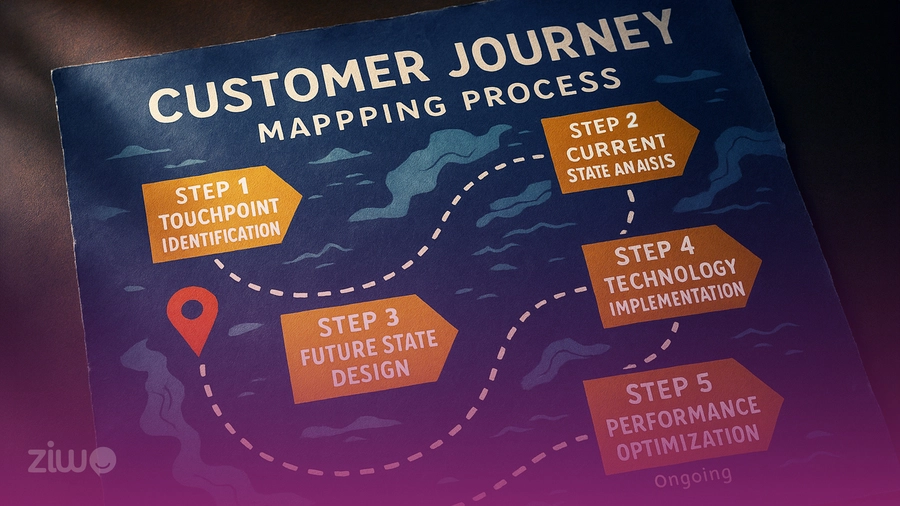
Step 1: Touchpoint Identification (Weeks 1-2)
- Catalog all customer interaction points (website, mobile app, physical stores, customer support, social media)
- Document current customer flows and decision points
- Identify data collection opportunities at each touchpoint
Step 2: Current State Analysis (Weeks 3-4)
- Map existing customer experience flows
- Identify pain points causing customer friction (average 32% satisfaction decrease)
- Analyze channel performance metrics and conversion rates
Step 3: Future State Design (Weeks 5-8)
- Create integrated experience blueprints
- Design seamless transition protocols between channels
- Establish consistency standards for messaging and service quality
Step 4: Technology Implementation (Months 3-12)
- Deploy integrated CRM and analytics systems
- Configure real-time data synchronization
- Implement cross-channel communication protocols
Step 5: Performance Optimization (Ongoing)
- Monitor key performance indicators (KPIs)
- Conduct regular customer experience audits
- Iterate based on customer feedback and behavioral data
How Can Businesses Achieve Consistency Across All Customer Touchpoints?
Consistency serves as the cornerstone of successful omnichannel strategies, directly impacting customer trust and loyalty. Research indicates that consistent customer experiences result in a 15-25% increase in customer satisfaction scores, 23% improvement in revenue growth, and 18% increase in customer lifetime value.
What does service quality uniformity mean in the omnichannel journey?
It means making sure customers receive the same high-quality support on every channel by:
- Standardizing response times (aiming for under 2 minutes on live support)
- Using consistent problem resolution procedures
- Providing unified staff training programs so service levels stay equal across channels
Personalization Strategy: Leveraging Data for Individual Customer Experiences
Personalized customer experiences drive significant business outcomes, with companies achieving:
- 20-30% increase in conversion rates
- 15% improvement in customer engagement metrics
- 25% growth in average order value
Why does personalization matter in the omnichannel customer journey?
Personalized experiences deliver strong results, including:
- 20–30% higher conversion rates
- 15% better customer engagement
- 25% growth in average order value
What data is needed for successful personalization?
To personalize effectively, companies must collect different types of data:
- Behavioral data: Website visits, purchase history, channel usage
- Demographic data: Age, location, income, lifestyle preferences
- Engagement data: Email open rates, social media interactions, support contacts
- Feedback data: Surveys, reviews, and Net Promoter Scores (NPS)
What are the stages of implementing personalization?
The process usually follows four steps:
- Data aggregation: Combine customer data from all touchpoints
- Segmentation analysis: Group customers by behavior and preferences
- Experience customization: Tailor offers, content, and messages
- Performance measurement: Track impact on conversions and satisfaction
Business Benefits: Quantified Impact of Omnichannel Excellence
-
- Customer Satisfaction and Retention Enhancement
- 25-35% improvement in customer retention rates
- 20-30% increase in customer satisfaction scores
- 40% reduction in customer service resolution time
- 15% decrease in customer acquisition costs
-
- Operational Efficiency Gains
- 35% reduction in duplicate data entry across systems
- 20% decrease in operational costs through automation
- 40% improvement in staff productivity metrics
- 25% reduction in customer service escalations
-
- Brand Loyalty and Advocacy Development
- 45% increase in Net Promoter Score (NPS)
- 30% growth in customer referrals and word-of-mouth marketing
- 20% improvement in brand perception metrics
- 35% increase in customer advocacy behaviors
What Are the Most Common Obstacles to Successful Omnichannel Implementation?
Organizations face five primary challenges when implementing omnichannel strategies.
1- Organizational alignment requirements present the biggest hurdle, as siloed departments often operate with conflicting objectives. The solution involves establishing cross-functional teams with unified customer experience KPIs, typically requiring 3-6 months for complete organizational realignment.
2- Data management complexity emerges from integrating multiple data sources and legacy systems. Companies can address this by implementing a Customer Data Platform (CDP) with API-first architecture, requiring investments ranging from $50,000 to $500,000 depending on organization size.
3- Meeting evolving customer expectations challenges businesses as consumer behavior and technology adoption change rapidly. Successful companies implement agile strategy development with quarterly reviews and monthly customer satisfaction surveys to stay responsive to changing needs.
4- Technical integration hurdles arise from legacy system compatibility and real-time data synchronization requirements. A phased migration approach with parallel system operation, comprehensive testing protocols, and rollback procedures helps mitigate these risks.
5- Balancing personalization with privacy requires careful attention to regulatory compliance while delivering personalized experiences. Organizations should implement privacy-by-design principles with transparent consent management and industry-specific regulatory compliance.
Successful Omnichannel Implementation Checklist: Phased Deployment Strategy
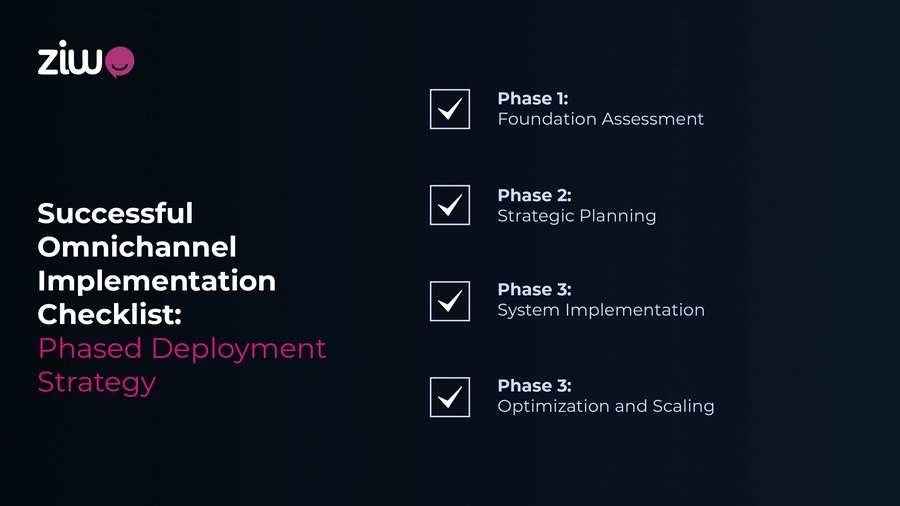
Phase 1: Foundation Assessment (Months 1-2)
- Customer journey audit: Document all existing touchpoints and interactions
- Technology infrastructure analysis: Evaluate current systems and integration capabilities
- Data inventory assessment: Catalog customer data sources and quality
- Organizational readiness evaluation: Assess team capabilities and change management requirements
Phase 2: Strategic Planning (Months 3-4)
- Future state design: Create integrated customer journey maps
- Technology platform selection: Choose CRM, CDP, and analytics solutions
- Implementation team formation: Establish cross-functional project teams
- Budget and timeline finalization: Secure resources and set milestone targets
Phase 3: System Implementation (Months 5-12)
- Technology deployment: Install and configure integrated systems
- Data integration setup: Establish real-time synchronization protocols
- Staff training programs: Educate teams on omnichannel service delivery
- Pilot program launch: Test implementation with select customer segments
Phase 4: Optimization and Scaling (Months 13-18)
- Performance monitoring: Track KPIs and customer satisfaction metrics
- Continuous improvement: Refine processes based on customer feedback
- Full-scale deployment: Expand successful pilot programs organization-wide
- Advanced personalization: Implement AI-driven customer experience optimization
What Mistakes Should Companies Avoid When Implementing Omnichannel Strategies?
Companies often make critical mistakes that can undermine the omnichannel customer journey. Here are the most common ones:
-
Technology-First Approach
Impact: Causes 40% of projects to fail when technology is chosen before defining the customer experience.
Prevention: Start with customer journey mapping and experience design before selecting technology platforms.
-
Departmental Silos
Impact: Reduce effectiveness by 60% due to inconsistent experiences and duplicated efforts.
Prevention: Establish a unified governance structure with cross-functional leadership and shared accountability for outcomes.
-
Insufficient Staff Training
Impact: Leads to a 50% reduction in service quality because employees aren’t ready for integrated service delivery.
Prevention: Invest in comprehensive training programs with ongoing skill development to ensure consistent experiences across all channels.
-
Data Privacy Oversight
Impact: Creates legal and trust risks when customer data protection and consent are not properly managed.
Prevention: Adopt a privacy-by-design approach with strong compliance reviews to build trust and meet regulations.
How Should Companies Measure Omnichannel Success?
Measuring the success of an omnichannel customer journey means looking at three key areas: customer experience, business performance, and operational efficiency.
Customer Experience Metrics
Which customer experience metrics matter most?
Companies should track how customers feel about their interactions. Improvements in Net Promoter Score (NPS) by 15–25 points are a strong sign of success. A Customer Satisfaction Score (CSAT) above 85% shows that service quality meets expectations, while Customer Effort Score (CES) highlights how easy it is for customers to complete tasks. Another important measure is First Contact Resolution, where the goal should be resolving at least 80% of issues during the first interaction.
Business Performance Indicators
How does omnichannel strategy impact financial performance?
The business side focuses on long-term value. For example, Customer Lifetime Value (CLV) should increase by 18–25% within two years, while Customer Acquisition Cost (CAC) should drop by around 15% thanks to higher referral rates. A well-executed strategy also drives 20–30% growth in revenue per customer, mainly through effective cross-selling, and improves customer retention rates by 25–35% compared to baseline levels.
Operational Efficiency Metrics
How can companies measure the efficiency of their omnichannel operations?
Operational performance shows whether systems and teams can keep up with customer expectations. A rise in cross-channel conversion rates indicates smoother transitions between touchpoints. Keeping average response times under two minutes is another benchmark for success in live support. On the employee side, productivity improvements of 20–40% reflect better use of resources. Finally, system integration uptime of 99.9% ensures customers always have reliable access to services across platforms.
Frequently Asked Questions
Q: What's the difference between multichannel and omnichannel strategies? A: Multichannel uses multiple customer interaction channels independently, while omnichannel integrates all channels to create a seamless, unified customer experience with consistent messaging and service quality.
Q: What ROI can businesses expect from omnichannel implementation? A: Studies consistently show 20-30% increases in customer satisfaction, 25-35% improvements in retention rates, and 23% growth in revenue within 12-24 months of implementation.
Q: How long does omnichannel implementation typically take? A: Full implementation ranges from 6-18 months depending on organizational complexity, with most companies seeing initial results within 3-6 months of launch.
Q: What are the most critical success factors for omnichannel strategies? A: The three most critical factors are: (1) cross-functional organizational alignment, (2) integrated technology infrastructure, and (3) consistent customer experience standards across all touchpoints.
Q: How do companies balance personalization with customer privacy concerns? A: Successful companies implement privacy-by-design principles, obtain explicit customer consent, provide transparency in data usage, and give customers control over their data preferences while maintaining regulatory compliance.
Key Terms and Definitions
- Omnichannel: Integrated approach providing seamless customer experience across all interaction channels
- Customer touchpoint: Any interaction point between customer and brand throughout the journey
- Cross-channel consistency: Uniform experience delivery across all customer interaction channels
- Customer journey mapping: Process of visualizing customer interactions from awareness to advocacy
- Customer Data Platform (CDP): Technology that creates unified customer profiles from multiple data sources
- Net Promoter Score (NPS): Customer loyalty metric measuring likelihood to recommend brand to others
- Customer lifetime value (CLV): Total revenue a customer generates throughout their relationship with the brand
- First contact resolution: Percentage of customer issues resolved during initial interaction
Conclusion: Strategic Imperatives for Omnichannel Success
Mastering the omnichannel customer journey represents a fundamental business imperative in today's competitive marketplace. Organizations that successfully implement integrated customer experience strategies achieve measurable improvements in customer satisfaction , retention rates, and revenue growth.
Critical success factors include:
- Technology integration: Implementing unified systems that enable real-time data sharing and consistent customer experiences
- Organizational alignment: Creating cross-functional teams with shared customer experience objectives and performance metrics
- Customer-centric culture: Prioritizing customer needs and preferences in all strategic decisions and operational processes
The companies that excel in delivering seamless omnichannel experiences will not only meet evolving customer expectations but exceed them, fostering long-term customer loyalty and sustainable competitive advantage.



